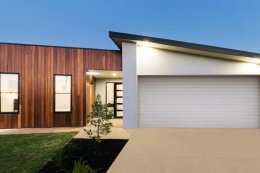
Hi everyone,
I’ve said over the last couple of weeks that I reckon the December quarter CPI figure (released on 29 January) will be lower than most people think and that we are at the top of the interest rate cycle. Just as the September CPI surprised everyone by being higher than expected, the December quarter will be lower than expected.
The monthly CPI for October is starting to support my view. Now, I know the monthly CPI figures are a relatively new series release by the Australian Bureau of Statistics and can be a bit volatile, but… they are heading in the right direction.
Consumer prices actually FELL (not slowed) 0.4 per cent in October, the largest monthly decline in prices since September 2020. The annual rate eased to 4.9 per cent – well below the 5.2 per cent most economists were expecting.
AMP Chief economist Shane Oliver has done the maths. If the monthly CPI averages 0.3 per cent in November and December (which is the average of the last three months), then annual inflation will fall to 3 per cent by the December quarter. It will be helped by last November’s 0.9 per cent increase and December’s 1.5 per cent increase dropping out of the annual calculations.
What Shane is saying is that after October’s 0.4 per cent CPI fall and if November and December both rise 0.3 per cent, the December quarter annual CPI will be back to the Reserve Bank’s target range.
That would be pretty incredible and there would certainly be no more rate rises. The question then becomes how long rates will stay at this level before coming down.
In the month of October there were clear signs of goods disinflation (prices dropping). Household furnishings, textiles and equipment, saw large outright price declines. Audio, visual & computer equipment prices continued their downward slide, and the Black Friday and Cyber Monday sales events should mean further declines in November.
Falls in rents, fuel and holiday travel prices were the big surprise. Many expected the increase in the Commonwealth Rent Assistance scheme to weigh on rent inflation, but the impact was much larger than expected.
Fuel and holiday travel are always notoriously volatile items and difficult to forecast. But automotive fuel prices fell by more than the weekly petrol and diesel prices data suggested and holiday travel prices dropped a massive 7 per cent in October.
One of the things to be wary of with this October monthly figure is that the data skews heavily to prices of goods and not so much for services. So, the RBA Governor, Michele Bullock’s focus in her recent speech on prices at hairdressers and dentists, dining out, sporting and other recreational activities don’t get effectively measured until later in the quarter.
CommSec expects the December quarter CPI to come in at 0.9 per cent for an annual rate of 4.4 per cent… but that is still a full 1 per cent below the RBA forecast.
After the shock of the September quarter, it looks like inflation is heading in the right direction.
Consumers are staying in the bunker
In another sign of just how much the interest rate hikes are biting, retail fell 0.2 in October.
The weakness in October was broadly based, except for food retailing which rose by 0.5 per cent. But there were significant falls in clothing and footwear (down 1 per cent), household goods and at department stores (down 0.6 per cent) and in other retailing and eating out (both down 0.4 per cent).
The ABS noted eating out has slowed recently owing to rising prices. With cost of living pressures biting, spending at cafes and restaurants was down for the second consecutive month.
Over the past year, retail trade has increased by just 1.2 per cent, which is the slowest annual pace of growth in retail trade outside of the pandemic since November 2010.
But as I’ve mentioned before, population growth is now almost double the pace than back in 2010, so per capita retail spending is very weak.
The ABS noted that consumers spent less on discretionary items in October in anticipation of the Black Friday sales events in November. This is a pattern observed over recent years given the growing prominence of the sales event.
I’ve shown before the graph of how Australian households have coped with inflation and rising interest rates so far by spending the savings they’d built up during lockdowns… which have now almost run out.
But it looks like retirees have been doing the same thing. Drawdowns on superannuation lump sums and pensions are now back up toward record levels.
Property values at record highs… but looking soft
CoreLogic’s national Home Value Index (HVI) rose 0.6 per cent in November, the smallest monthly gain since the growth cycle commenced in February, but still a record high.
After falling 7.5 per cent from a peak in April 2022 to a trough in January 2023, housing values have bounced 8.3 per cent higher over the past 10 months – a classic ‘V’ shaped recovery.
But is this as good as it’s going to get? The Australian residential property market is becoming multi-speed with three capital cities showing falls in values in November: Melbourne and Hobart, both down 0.1 per cent, and Darwin down 0.3 per cent.
Growth in Sydney home values also slowed sharply, reducing to 0.3 per cent, the smallest monthly gain in the recovery cycle to-date. With Sydney home values slipping into negative growth over the last week of the month, CoreLogic believes Sydney could follow Melbourne’s lead, with home values stabilising or dipping lower in December.
On the flip side, Perth housing values accelerated in November, posting the largest monthly gain since March 2021 at 1.9 per cent. Brisbane (1.3 per cent) and Adelaide (1.2 per cent) also stand out with a resilient and rapid pace of growth.
The drop-off in auction clearance rates last weekend in Sydney and Melbourne underlines the softening in those two markets.
Ray White’s 2024 property forecast
Last week I focused on Louis Christopher’s SQM Housing Boom and Bust report for 2024. It forecast that Sydney and Melbourne property prices (which have been the star property markets over recent years) will fall next year. Only moderately, but they will fall from their record high levels as interest rates bite.
This week, Ray White’s chief economist Nerida Conisbee has issued her thoughts on the residential property market for 2024. These are Nerida’s 10 observations:
1. Price growth to continue
Despite many predictions of a catastrophic fall in house prices in 2023, they did in fact move in the opposite direction. Leading the way has been Perth, but the combination of strong population growth and a shortage of homes was enough to combat rising interest rates. As interest rates head close to peak, it is expected that price growth will continue.
At this point, housing supply remains extremely low and many new home buyers are being pushed into the established market. Big jumps in rents are pushing more first home buyers into the market and population growth is continuing to be strong. Concerns about affordability for both home buyers and renters will be big policy issues for 2024.
2. Interest rates to peak, but mortgage holders need to “survive until 2025”
Inflation remains persistent but is starting to come down. This means we may see another rate rise in 2024 however it does look like interest rates are either at peak, or very close.
This is great news for mortgage holders who have had to endure the sharpest increase in rates ever recorded. While it is good news, the bad news is that we are unlikely to see a rate cut until late 2024 or early 2025. This means mortgage holders need to “survive until 2025”, paying far more on their home loans than they did two years ago.
3. Housing supply to continue as policy focus
Australia is one of the least affordable countries in the world to buy a home. Although our rents remain relatively affordable relative to incomes compared to most other countries, rapid growth has been stressful for anyone renting. Australia is also a world leader in not building enough homes and this is the key reason why housing is so expensive. It is great news that this has finally been recognised and is now a major policy focus. It will remain so for a long time.
4. Look out for beach house bargains over summer but you need to move quick
While most of Australia saw price growth over the year, there were some parts of Australia that didn’t. Many beachside holiday destinations saw a sharp rise in properties for sale and a corresponding fall in prices. This was driven by many pandemic-driven holiday home purchases coming back onto the market.
While having a holiday home made sense in 2021, higher interest rates, the ability to travel again and restrictions on Airbnb have made it far more difficult. While prices are much more affordable, it may not last long with housing shortages a problem in many of these highly desirable parts of the country.
5. Luxury apartment market to soar
The types of apartments being built in Australia have changed dramatically over the past decade. Whereas apartments in Australia were traditionally the place for younger people to live prior to buying a house, we are now seeing people choosing to live in apartments for longer or to downsize from a large home. Demand is increasing for much larger, higher quality, more expensive developments. This has resulted in the most expensive apartments in Australia seeing price increases more than double those of an average priced apartment. This year, fewer apartments being built, a growing population and a desire to live in some of Australia’s most sought after inner urban areas will lead to a boom in luxury apartment demand.
6. Homes to become even greener
While being environmentally aware drives some people to buy green homes, other factors are now making them desirable for the wider population.
One is the rising cost of energy. Having a greener home utilising solar and batteries makes it cheaper to run air conditioning, heaters and pool pumps.
7. Rents to stabilise but tough times for renters to continue
Surprisingly, Australia is relatively affordable for renters compared to most countries around the world. While this is the case, rents have risen rapidly since the middle of the pandemic, driven by many people’s desire to live alone, a lack of new housing development and the return of population growth.
With household size increasing again, a stabilisation in rents is starting, however it will take some time for new home development to catch up. In addition, investors are not particularly active at the moment, limiting the amount of new rental properties coming to market.







